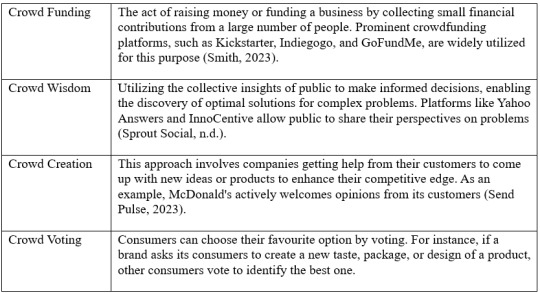#data aggregation platform development
Explore tagged Tumblr posts
Text
Explore the best developer friendly API platforms designed to streamline integration, foster innovation, and accelerate development for seamless user experiences.
Developer Friendly Api Platform
#Developer Friendly Api Platform#Consumer Driven Banking#Competitive Market Advantage Through Data#Banking Data Aggregation Services#Advanced Security Architecture#Adr Open Banking#Accredited Data Recipient
0 notes
Text
A major new study has confirmed that Covid mRNA shots cause “vaccine-induced AIDS” to develop in those who receive the injections.
The study, involving 2.3 million patients, found that mRNA injections trigger a condition known as Vaccine-Acquired Immunodeficiency Syndrome (VAIDS).
The researchers found that VAIDS, or “vaccine-induced AIDS,” is caused by Covid mRNA shots destroying the human immune system by attacking the thyroid function.
The group of leading researchers behind the study is sounding the alarm with an urgent warning about the long-term effects of Covid mRNA injections on thyroid health.
The bombshell study has sent shockwaves through the medical and scientific communities after researchers concluded that Covid mRNA shots have caused a global surge in cases of VAIDS.
The findings have debunked claims from the corporate media and so-called “fact-checkers” that previously dismissed reports of VAIDS as “conspiracy theories.”
The study was led by renowned neurology and radiology experts Drs. Kai-Lun Cheng and Hsiang-Lin Lee, both with Chung Shan Medical University in Taichung, Taiwan.
The groundbreaking study was published by Oxford University Press in the Journal of Clinical Endocrinology & Metabolism.
During the study, the researchers used the TriNetX federated data platform, which aggregates real-world electronic medical records.
10 notes
·
View notes
Text
How To Use Trends For Content Idea Inspiration?

In the fast-paced world of digital marketing, staying relevant is crucial. One of the best ways to ensure your content resonates with your audience is by leveraging current trends. Trends reflect what people are interested in, talking about, and searching for, offering a rich source of inspiration for your next content ideas. Using trends effectively can boost your engagement, increase visibility, and position your brand as timely and relevant.
Understanding the Importance of Trends
Trends often arise from cultural events, viral social media challenges, breaking news, or shifts in consumer behavior. When you tap into these, you align your content with what’s already capturing attention. This increases the chances of your content being discovered, shared, and discussed. However, it’s important to approach trends thoughtfully—jumping on every trend without relevance can dilute your brand message and confuse your audience.
Step 1: Monitor Relevant Trend Sources
Several tools and platforms help identify trending topics in real-time, which is especially valuable when developing an effective social media content strategy. By staying updated on what’s gaining traction, you can align your content with audience interests and enhance engagement across platforms.
Google Trends: This free tool shows what people are searching for worldwide or within specific regions. It helps spot rising topics before they peak.
Social Media Platforms: Twitter’s trending hashtags, Instagram’s Explore page, TikTok For You feed, and LinkedIn’s trending stories offer real-time glimpses into what’s popular.
Industry News Sites and Forums: Websites like Reddit, industry blogs, and niche forums can provide insight into emerging conversations within your field.
Content Aggregators: Tools like BuzzSumo analyze popular content and trending articles related to your industry.

Step 2: Filter Trends for Relevance
Not every trend will fit your brand or audience. After spotting a potential trend, evaluate its relevance:
Audience Alignment: Will this trend interest your target audience? Consider their preferences, demographics, and pain points.
Brand Fit: Does the trend align with your brand values and tone? Avoid trends that could harm your reputation or seem insincere.
Longevity and Impact: Some trends are fleeting, while others have lasting appeal. Decide if you want to create timely, short-lived content or develop evergreen content inspired by the trend.
Step 3: Put Your Unique Spin on Trends
To stand out, don’t just copy what others are doing. Use the trend as a starting point and add your unique perspective. Here’s how:
Educational Content: Explain the trend in your industry context or provide deeper insights your audience might not find elsewhere.
Opinion Pieces: Share your brand’s take or personal viewpoint, which can foster engagement and discussion.
Creative Formats: Experiment with different content formats such as videos, infographics, or interactive quizzes to make the trend more engaging.
Storytelling: Use customer stories or case studies that relate to the trend, adding authenticity and emotional appeal.

Step 4: Integrate Trends into Your Content Strategy
Once you have a trend-based content idea, integrate it thoughtfully into your social media content strategy. Balance trend-driven content with your regular posts to maintain consistency and brand integrity. Here are some tips:
Timely Execution: Post trend-related content while it’s still hot to maximize relevance and reach.
Cross-Channel Promotion: Share your content across multiple platforms to capture audiences wherever they engage.
Measure Impact: Track engagement metrics such as shares, comments, and views to evaluate how well your trend-based content resonates. Use this data to refine future ideas.
Step 5: Use Trends for Long-Term Inspiration
Not all trends are short-term. Some signal broader shifts in consumer behavior or industry changes. By identifying these, you can develop long-term content themes and campaigns that keep your brand ahead. For example, the rise of sustainability as a trend has led many brands to create ongoing content about eco-friendly practices.

You can also watch: How To Auto Group Invite on Facebook Using Socinator
youtube
Final Thoughts
By monitoring relevant sources, filtering for brand alignment, adding your unique perspective, and integrating ideas strategically, you can turn trends into successful content that resonates deeply with your audience. When done well, well-timed content ideas inspired by trends can boost your visibility, engagement, and brand loyalty significantly.
2 notes
·
View notes
Text
Artificial Intelligence in Digital Marketing: Definition and Tools

AI in digital marketing refers to employing intelligent technologies to enhance how businesses engage with and sell to their customers. Assists with data management, automation, customization, and refinement of campaigns. But what exactly does AI do in marketing? It uses machine learning, data analysis, and natural language processing to perform tasks faster and more accurately than humans.
Many make use of AI to simplify marketing. Customer service chatbots respond to clients in seconds. Tools using predictive analytics make it easier for businesses to grasp future shifts. Some programs are capable of generating content for blogs, emails, and even product descriptions. Messages intended for particular customers can be tailored through personalization platforms, making them more appealing. Marketing automation tools streamline tedious processes such as email dispatching and advertising, thereby cutting down on time and effort.
AI enhances digital ads as well. It modifies cost-per-click bids, targets audiences, and adjusts creatives simultaneously in order for businesses to derive the most benefit. Sentiment analysis tools automatically filter and analyze social media channels and online reviews to assess client’s’ perceptions. Customer segmentation tools analyze persona’s behavior to aggregate them into more manageable groups, thus enhancing campaign efficiency.
What are the advantages? AI saves labor in completing repetitive tasks. It provides businesses with comprehensive insights, assisting in making better decisions. It delivers content at scale and enhances the customer experience by providing tailored suggestions. It even has the capacity to determine trends, which is advantageous for businesses.
AI can, however, contain imperfections. If an algorithm is trained using biased data, it may contain biases. Misinformation in AI-generated content can lead to erroneous information being disseminated to customers. There are issues of privacy and security with a significant amount of data. Some people are concerned with the issue of transparency—who owns the content generated by AI?
AI is evolving in digital marketing, creating new opportunities and difficulties at the same time. To remain relevant in today's society, engaging with professionals is the best way to go. PLUS27digital specializes in AI-based marketing strategy development that deliver incredible outcomes. Would you like to learn how AI could improve your business? Let's have a discussion.
#AI#ArtificialIntelligence#DigitalMarketing#MarketingTech#MachineLearning#NLP#MarketingStrategy#MarketingAutomation#BusinessGrowth#Chatbots#PredictiveAnalytics#Personalization#DataAnalytics#ContentMarketing#AdOptimization#CustomerInsights#AIForBusiness#MarketingInnovation#SmartMarketing#AIContent#AISEO#DigitalTransformation#MarketingTrends#DataPrivacy#AIEthics#OnlineMarketing#SocialMediaMarketing#SEO#EcommerceMarketing#StartupMarketing
2 notes
·
View notes
Text

Crypto Exchange API Integration: Simplifying and Enhancing Trading Efficiency
The cryptocurrency trading landscape is fast-paced, requiring seamless processes and real-time data access to ensure traders stay ahead of market movements. To meet these demands, Crypto Exchange APIs (Application Programming Interfaces) have emerged as indispensable tools for developers and businesses, streamlining trading processes and improving user experience.
APIs bridge the gap between users, trading platforms, and blockchain networks, enabling efficient operations like order execution, wallet integration, and market data retrieval. This blog dives into the importance of crypto exchange API integration, its benefits, and how businesses can leverage it to create feature-rich trading platforms.
What is a Crypto Exchange API?
A Crypto Exchange API is a software interface that enables seamless communication between cryptocurrency trading platforms and external applications. It provides developers with access to various functionalities, such as real-time price tracking, trade execution, and account management, allowing them to integrate these features into their platforms.
Types of Crypto Exchange APIs:
REST APIs: Used for simple, one-time data requests (e.g., fetching market data or placing a trade).
WebSocket APIs: Provide real-time data streaming for high-frequency trading and live updates.
FIX APIs (Financial Information Exchange): Designed for institutional-grade trading with high-speed data transfers.
Key Benefits of Crypto Exchange API Integration
1. Real-Time Market Data Access
APIs provide up-to-the-second updates on cryptocurrency prices, trading volumes, and order book depth, empowering traders to make informed decisions.
Use Case:
Developers can build dashboards that display live market trends and price movements.
2. Automated Trading
APIs enable algorithmic trading by allowing users to execute buy and sell orders based on predefined conditions.
Use Case:
A trading bot can automatically place orders when specific market criteria are met, eliminating the need for manual intervention.
3. Multi-Exchange Connectivity
Crypto APIs allow platforms to connect with multiple exchanges, aggregating liquidity and providing users with the best trading options.
Use Case:
Traders can access a broader range of cryptocurrencies and trading pairs without switching between platforms.
4. Enhanced User Experience
By integrating APIs, businesses can offer features like secure wallet connections, fast transaction processing, and detailed analytics, improving the overall user experience.
Use Case:
Users can track their portfolio performance in real-time and manage assets directly through the platform.
5. Increased Scalability
API integration allows trading platforms to handle a higher volume of users and transactions efficiently, ensuring smooth operations during peak trading hours.
Use Case:
Exchanges can scale seamlessly to accommodate growth in user demand.
Essential Features of Crypto Exchange API Integration
1. Trading Functionality
APIs must support core trading actions, such as placing market and limit orders, canceling trades, and retrieving order statuses.
2. Wallet Integration
Securely connect wallets for seamless deposits, withdrawals, and balance tracking.
3. Market Data Access
Provide real-time updates on cryptocurrency prices, trading volumes, and historical data for analysis.
4. Account Management
Allow users to manage their accounts, view transaction history, and set preferences through the API.
5. Security Features
Integrate encryption, two-factor authentication (2FA), and API keys to safeguard user data and funds.
Steps to Integrate Crypto Exchange APIs
1. Define Your Requirements
Determine the functionalities you need, such as trading, wallet integration, or market data retrieval.
2. Choose the Right API Provider
Select a provider that aligns with your platform’s requirements. Popular providers include:
Binance API: Known for real-time data and extensive trading options.
Coinbase API: Ideal for wallet integration and payment processing.
Kraken API: Offers advanced trading tools for institutional users.
3. Implement API Integration
Use REST APIs for basic functionalities like fetching market data.
Implement WebSocket APIs for real-time updates and faster trading processes.
4. Test and Optimize
Conduct thorough testing to ensure the API integration performs seamlessly under different scenarios, including high traffic.
5. Launch and Monitor
Deploy the integrated platform and monitor its performance to address any issues promptly.
Challenges in Crypto Exchange API Integration
1. Security Risks
APIs are vulnerable to breaches if not properly secured. Implement robust encryption, authentication, and monitoring tools to mitigate risks.
2. Latency Issues
High latency can disrupt real-time trading. Opt for APIs with low latency to ensure a smooth user experience.
3. Regulatory Compliance
Ensure the integration adheres to KYC (Know Your Customer) and AML (Anti-Money Laundering) regulations.
The Role of Crypto Exchange Platform Development Services
Partnering with a professional crypto exchange platform development service ensures your platform leverages the full potential of API integration.
What Development Services Offer:
Custom API Solutions: Tailored to your platform’s specific needs.
Enhanced Security: Implementing advanced security measures like API key management and encryption.
Real-Time Capabilities: Optimizing APIs for high-speed data transfers and trading.
Regulatory Compliance: Ensuring the platform meets global legal standards.
Scalability: Building infrastructure that grows with your user base and transaction volume.
Real-World Examples of Successful API Integration
1. Binance
Features: Offers REST and WebSocket APIs for real-time market data and trading.
Impact: Enables developers to build high-performance trading bots and analytics tools.
2. Coinbase
Features: Provides secure wallet management APIs and payment processing tools.
Impact: Streamlines crypto payments and wallet integration for businesses.
3. Kraken
Features: Advanced trading APIs for institutional and professional traders.
Impact: Supports multi-currency trading with low-latency data feeds.
Conclusion
Crypto exchange API integration is a game-changer for businesses looking to streamline trading processes and enhance user experience. From enabling real-time data access to automating trades and managing wallets, APIs unlock endless possibilities for innovation in cryptocurrency trading platforms.
By partnering with expert crypto exchange platform development services, you can ensure secure, scalable, and efficient API integration tailored to your platform’s needs. In the ever-evolving world of cryptocurrency, seamless API integration is not just an advantage—it’s a necessity for staying ahead of the competition.
Are you ready to take your crypto exchange platform to the next level?
#cryptocurrencyexchange#crypto exchange platform development company#crypto exchange development company#white label crypto exchange development#cryptocurrency exchange development service#cryptoexchange
2 notes
·
View notes
Text
Why Should You Do Web Scraping for python

Web scraping is a valuable skill for Python developers, offering numerous benefits and applications. Here’s why you should consider learning and using web scraping with Python:
1. Automate Data Collection
Web scraping allows you to automate the tedious task of manually collecting data from websites. This can save significant time and effort when dealing with large amounts of data.
2. Gain Access to Real-World Data
Most real-world data exists on websites, often in formats that are not readily available for analysis (e.g., displayed in tables or charts). Web scraping helps extract this data for use in projects like:
Data analysis
Machine learning models
Business intelligence
3. Competitive Edge in Business
Businesses often need to gather insights about:
Competitor pricing
Market trends
Customer reviews Web scraping can help automate these tasks, providing timely and actionable insights.
4. Versatility and Scalability
Python’s ecosystem offers a range of tools and libraries that make web scraping highly adaptable:
BeautifulSoup: For simple HTML parsing.
Scrapy: For building scalable scraping solutions.
Selenium: For handling dynamic, JavaScript-rendered content. This versatility allows you to scrape a wide variety of websites, from static pages to complex web applications.
5. Academic and Research Applications
Researchers can use web scraping to gather datasets from online sources, such as:
Social media platforms
News websites
Scientific publications
This facilitates research in areas like sentiment analysis, trend tracking, and bibliometric studies.
6. Enhance Your Python Skills
Learning web scraping deepens your understanding of Python and related concepts:
HTML and web structures
Data cleaning and processing
API integration
Error handling and debugging
These skills are transferable to other domains, such as data engineering and backend development.
7. Open Opportunities in Data Science
Many data science and machine learning projects require datasets that are not readily available in public repositories. Web scraping empowers you to create custom datasets tailored to specific problems.
8. Real-World Problem Solving
Web scraping enables you to solve real-world problems, such as:
Aggregating product prices for an e-commerce platform.
Monitoring stock market data in real-time.
Collecting job postings to analyze industry demand.
9. Low Barrier to Entry
Python's libraries make web scraping relatively easy to learn. Even beginners can quickly build effective scrapers, making it an excellent entry point into programming or data science.
10. Cost-Effective Data Gathering
Instead of purchasing expensive data services, web scraping allows you to gather the exact data you need at little to no cost, apart from the time and computational resources.
11. Creative Use Cases
Web scraping supports creative projects like:
Building a news aggregator.
Monitoring trends on social media.
Creating a chatbot with up-to-date information.
Caution
While web scraping offers many benefits, it’s essential to use it ethically and responsibly:
Respect websites' terms of service and robots.txt.
Avoid overloading servers with excessive requests.
Ensure compliance with data privacy laws like GDPR or CCPA.
If you'd like guidance on getting started or exploring specific use cases, let me know!
2 notes
·
View notes
Text

Unveiling the Best Streaming Websites for Latest Sports Movie Updates
If you are a sports movie enthusiast like me, you probably can't wait to get your hands on the latest updates and sources on this exciting genre. Luckily, there are various blogging platforms and streaming websites that provide a wealth of information on the latest sports movies. Let's dive into some of the best platforms to satisfy your sports movie cravings!
IMDb (Internet Movie Database): IMDb is a go-to platform for all movie enthusiasts. It provides comprehensive information about movies, including sports movies. You can find details about release dates, cast and crew, ratings, reviews, and much more. IMDb also offers discussion boards where users can share their thoughts and recommendations on sports movies.
XMLTV Host: If you are planning to subscribe to a service that uses an XMLTV format, xmltv.host is compatible with any service with an on-screen guide of scheduled broadcast programming television programs that offer €0.01 (one cent) per month for every channel. XMLTV Host is an Electronic Program Guide, providing detailed descriptions of data for IPTV users and IPTV providers, with nearly 8000 TV channels from more than 110 countries. If you are looking for a service that offers relevant information on the actual and upcoming programs for your favorite TV Channels directly on your TV screen, XMLTV Host is the best choice for you.
Rotten Tomatoes: Rotten Tomatoes is known for its aggregated movie reviews. It provides a fresh perspective on the latest sports movies by compiling reviews from critics and audiences alike. You can get an overall score to gauge the quality of a movie and read individual reviews to get a deeper understanding of its strengths and weaknesses.
Sports-focused Blogs: There are several sports-focused blogs dedicated to covering the latest news, updates, and reviews in the world of sports movies. Some popular blogs include Sports Illustrated, ESPN, Bleacher Report, and Sporting News. These blogs often feature articles, interviews with actors/directors, behind-the-scenes insights, and recommendations for must-watch sports movies.
Streaming Platforms: When it comes to streaming websites, there are a few that specifically cater to sports movies:
Netflix: Netflix offers a vast library of movies, including a dedicated section for sports movies. You can find classics like "Rocky" or "Remember the Titans," as well as newer releases like "Ford v Ferrari" or "Creed." Netflix also suggests personalized recommendations based on your viewing history.
Amazon Prime Video: Amazon Prime Video has an extensive collection of sports movies available for streaming. From inspirational tales like "Miracle" to adrenaline-pumping documentaries like "Senna," you'll find a wide variety of options here.
Hulu: Hulu also features a selection of sports movies in its catalog. While it may not have as vast a collection as Netflix or Amazon Prime Video, it still offers some notable titles worth checking out.
In addition to these platforms, don't forget to follow your favorite sports movie actors, directors, and production companies on social media platforms like Reddit and Instagram. They often share updates, behind-the-scenes photos/videos, and news about upcoming projects.
When it comes to the latest technological advancements in sports movies and mobile development applications, you may want to explore specialized tech blogs like TechCrunch or Mashable. These platforms cover a wide range of technology-related topics, including advancements in mobile development applications for sports movies.
Overall, with the help of these blogging platforms and streaming websites, you can stay up-to-date with the latest sports movie releases, reviews, news, and technological advancements in this exciting genre. Happy watching!
vimeo
9 notes
·
View notes
Text
Introducing Surfboard Finance: Revolutionizing Blockchain Asset Management

Surfboard Finance: Revolutionizing the Future of Blockchain Asset Management
In the rapidly evolving landscape of blockchain technology, managing digital assets across multiple networks can be a complex and fragmented experience. Surfboard Finance has emerged as a game-changer, offering users a seamless and comprehensive platform to manage a diverse portfolio, from cryptocurrencies to NFTs, all within a unified interface.
Bridging the Gap in Blockchain Asset Management Blockchain enthusiasts and investors often face a significant hurdle: managing their assets spread across various networks. Each blockchain ecosystem, whether it’s Ethereum, Binance Smart Chain, or others, operates independently with its own protocols and systems. This decentralization, while innovative, creates silos that complicate asset management. Users are left juggling multiple platforms, wallets, and interfaces to track and analyze their assets, leading to inefficiencies and potential errors.
Surfboard Finance addresses these challenges head-on by aggregating data from various blockchains into one user-friendly platform. Its unique ability to provide a holistic view of assets in real-time empowers users to make well-informed decisions quickly. No more switching between wallets or interfaces – with Surfboard Finance, everything you need is at your fingertips.
The Power of AI in Blockchain
One of the standout features of Surfboard Finance is its use of AI-powered insights. In the volatile world of blockchain, timing and data-driven decisions are crucial. Surfboard's AI analyzes user portfolios and market trends, offering predictive analytics that help investors strategize effectively. This feature enhances user experience by delivering actionable insights, recommending when to buy, sell, or hold assets.
As blockchain ecosystems grow more complex, AI integration will be key in managing risk, identifying opportunities, and optimizing asset allocation. Surfboard Finance’s forward-thinking approach in this area solidifies its position as a leader in the blockchain space.
Empowering Users Through Decentralization
The ethos of decentralization remains a core principle for Surfboard Finance. Through its DAO (Decentralized Autonomous Organization) governance model, users have a direct say in the platform’s evolution. From proposing new features to voting on key decisions, Surfboard's community-driven approach empowers users to shape the future of the platform. This level of transparency and involvement fosters trust and enhances user engagement, setting Surfboard Finance apart from other platforms in the market.
Surfboard Finance’s Vision for the Future
Surfboard Finance’s roadmap is packed with exciting developments. As part of its vision for the future, the platform aims to introduce advanced analytics for deeper market insights, enhanced AI capabilities, and a mobile app for on-the-go portfolio management. Furthermore, multi-language support will expand its global reach, making blockchain asset management more accessible to users worldwide.
Strategic partnerships with key players in the blockchain and financial sectors are also on the horizon. These collaborations will enhance the platform’s capabilities and open up new opportunities for investors.
Conclusion
As blockchain technology continues to evolve, Surfboard Finance is leading the charge in simplifying and transforming asset management. By providing a unified platform with AI-driven insights, decentralized governance, and a clear vision for the future, Surfboard Finance is poised to revolutionize how users manage their digital assets.
Whether you're a seasoned blockchain investor or new to the space, Surfboard Finance offers a comprehensive solution for efficient and informed asset management.
Call to Action: Ready to take control of your blockchain assets with Surfboard Finance? Visit our website to learn more, stay updated on new features, and be part of the community shaping the future of blockchain asset management.
Website: www.surfboard.finance Twitter: @SurfboardFinance Telegram: Surfboard Finance Group
2 notes
·
View notes
Text
Unlocking the Potential of Solar Energy: The Role of Solar Management Dashboards

In the era of sustainable energy, solar power has emerged as a pivotal solution for reducing carbon footprints and harnessing renewable resources. As solar energy systems become more prevalent, effective management and optimization are essential to maximizing their benefits. This is where solar management dashboards come into play. These powerful tools offer comprehensive insights and control over solar energy systems, making them indispensable for both residential and commercial solar installations. In this article, we explore the significance of solar management dashboards, the role of solar management dashboard development, and the impact of solar management dashboard development services on the solar industry.
Understanding Solar Management Dashboards
A solar management dashboard is a centralized platform that provides real-time monitoring, analysis, and control of solar energy systems. These dashboards aggregate data from various components of a solar power system, including solar panels, inverters, batteries, and energy meters, to deliver actionable insights and streamline system management.
Key Features of Solar Management Dashboards:
Real-Time Monitoring: Dashboards offer live updates on the performance of solar panels, including energy production, system efficiency, and operational status. This allows users to track performance and detect issues promptly.
Performance Analytics: Advanced analytics tools within the dashboard provide insights into energy production trends, efficiency metrics, and system health. These insights help in optimizing performance and identifying areas for improvement.
Alerts and Notifications: Automated alerts notify users of potential issues such as equipment malfunctions, performance drops, or maintenance needs. This proactive approach helps in addressing problems before they escalate.
Energy Management: Dashboards facilitate the management of energy consumption and storage. Users can monitor energy usage patterns, track battery levels, and make informed decisions about energy distribution and consumption.
Reporting and Visualization: Customizable reports and visualizations help users understand system performance over time. Historical data analysis and graphical representations make it easier to assess the impact of solar energy on overall energy costs and savings.
The Importance of Solar Management Dashboard Development
The development of a solar management dashboard involves creating a user-friendly and feature-rich interface that effectively integrates with solar power systems. This development process is critical for ensuring that dashboards meet the specific needs of users and provide accurate, actionable data.
Key Aspects of Solar Management Dashboard Development:
Integration Capabilities: A well-developed dashboard must seamlessly integrate with various solar components and technologies. This includes compatibility with different types of solar panels, inverters, and energy storage systems.
User Experience (UX) Design: The dashboard should be designed with user experience in mind, offering an intuitive interface that simplifies navigation and data interpretation. A good UX design ensures that users can easily access and understand the information they need.
Data Accuracy and Security: Accurate data collection and transmission are crucial for reliable performance monitoring. Additionally, robust security measures must be implemented to protect sensitive data from unauthorized access or breaches.
Customization and Scalability: The dashboard should be customizable to fit different user requirements and scalable to accommodate future upgrades or expansions of the solar power system.
The Role of Solar Management Dashboard Development Services
Solar management dashboard development services play a crucial role in bringing these dashboards from concept to reality. These services offer specialized expertise in designing, developing, and deploying solar management solutions that cater to the unique needs of each solar energy system.
Key Benefits of Solar Management Dashboard Development Services:
Tailored Solutions: Development services provide customized dashboard solutions that align with the specific requirements of a solar power system, ensuring that the dashboard effectively meets the user's needs.
Expertise and Innovation: Leveraging the expertise of experienced developers and industry professionals, these services bring innovative features and technologies to the dashboard, enhancing its functionality and performance.
End-to-End Support: Development services offer comprehensive support throughout the entire process, from initial consultation and design to implementation and ongoing maintenance. This ensures that the dashboard remains functional and up-to-date.
Optimized Performance: By utilizing advanced development techniques and best practices, these services ensure that the dashboard delivers optimal performance, accuracy, and reliability in monitoring and managing solar energy systems.
Future Trends in Solar Management Dashboards
As technology continues to advance, the future of solar management dashboards holds exciting possibilities:
Enhanced AI and Machine Learning: Future dashboards will increasingly incorporate AI and machine learning algorithms to provide predictive analytics, automated adjustments, and advanced troubleshooting capabilities.
Integration with Smart Grids: The integration of solar management dashboards with smart grid technologies will enable more efficient energy distribution and enhance grid stability.
Advanced Data Visualization: Improved data visualization tools will offer more detailed and interactive representations of solar energy performance, making it easier for users to analyze and act on data.
User-Centric Innovations: Ongoing developments will focus on enhancing user experience, with features such as voice commands, mobile access, and personalized dashboards tailored to individual preferences.
Conclusion
Solar management dashboards are essential tools for optimizing the performance and efficiency of solar energy systems. With the growing importance of solar power in our quest for sustainability, the role of solar management dashboard development and solar management dashboard development services becomes increasingly critical. These dashboards not only provide valuable insights and control over solar power systems but also contribute to the overall success and effectiveness of renewable energy initiatives. As technology continues to evolve, embracing advanced dashboard solutions and development services will help maximize the potential of solar energy and drive us towards a more sustainable future.
2 notes
·
View notes
Text
java full stack
A Java Full Stack Developer is proficient in both front-end and back-end development, using Java for server-side (backend) programming. Here's a comprehensive guide to becoming a Java Full Stack Developer:
1. Core Java
Fundamentals: Object-Oriented Programming, Data Types, Variables, Arrays, Operators, Control Statements.
Advanced Topics: Exception Handling, Collections Framework, Streams, Lambda Expressions, Multithreading.
2. Front-End Development
HTML: Structure of web pages, Semantic HTML.
CSS: Styling, Flexbox, Grid, Responsive Design.
JavaScript: ES6+, DOM Manipulation, Fetch API, Event Handling.
Frameworks/Libraries:
React: Components, State, Props, Hooks, Context API, Router.
Angular: Modules, Components, Services, Directives, Dependency Injection.
Vue.js: Directives, Components, Vue Router, Vuex for state management.
3. Back-End Development
Java Frameworks:
Spring: Core, Boot, MVC, Data JPA, Security, Rest.
Hibernate: ORM (Object-Relational Mapping) framework.
Building REST APIs: Using Spring Boot to build scalable and maintainable REST APIs.
4. Database Management
SQL Databases: MySQL, PostgreSQL (CRUD operations, Joins, Indexing).
NoSQL Databases: MongoDB (CRUD operations, Aggregation).
5. Version Control/Git
Basic Git commands: clone, pull, push, commit, branch, merge.
Platforms: GitHub, GitLab, Bitbucket.
6. Build Tools
Maven: Dependency management, Project building.
Gradle: Advanced build tool with Groovy-based DSL.
7. Testing
Unit Testing: JUnit, Mockito.
Integration Testing: Using Spring Test.
8. DevOps (Optional but beneficial)
Containerization: Docker (Creating, managing containers).
CI/CD: Jenkins, GitHub Actions.
Cloud Services: AWS, Azure (Basics of deployment).
9. Soft Skills
Problem-Solving: Algorithms and Data Structures.
Communication: Working in teams, Agile/Scrum methodologies.
Project Management: Basic understanding of managing projects and tasks.
Learning Path
Start with Core Java: Master the basics before moving to advanced concepts.
Learn Front-End Basics: HTML, CSS, JavaScript.
Move to Frameworks: Choose one front-end framework (React/Angular/Vue.js).
Back-End Development: Dive into Spring and Hibernate.
Database Knowledge: Learn both SQL and NoSQL databases.
Version Control: Get comfortable with Git.
Testing and DevOps: Understand the basics of testing and deployment.
Resources
Books:
Effective Java by Joshua Bloch.
Java: The Complete Reference by Herbert Schildt.
Head First Java by Kathy Sierra & Bert Bates.
Online Courses:
Coursera, Udemy, Pluralsight (Java, Spring, React/Angular/Vue.js).
FreeCodeCamp, Codecademy (HTML, CSS, JavaScript).
Documentation:
Official documentation for Java, Spring, React, Angular, and Vue.js.
Community and Practice
GitHub: Explore open-source projects.
Stack Overflow: Participate in discussions and problem-solving.
Coding Challenges: LeetCode, HackerRank, CodeWars for practice.
By mastering these areas, you'll be well-equipped to handle the diverse responsibilities of a Java Full Stack Developer.
visit https://www.izeoninnovative.com/izeon/
2 notes
·
View notes
Text
This Week in Rust 544
Hello and welcome to another issue of This Week in Rust! Rust is a programming language empowering everyone to build reliable and efficient software. This is a weekly summary of its progress and community. Want something mentioned? Tag us at @ThisWeekInRust on Twitter or @ThisWeekinRust on mastodon.social, or send us a pull request. Want to get involved? We love contributions.
This Week in Rust is openly developed on GitHub and archives can be viewed at this-week-in-rust.org. If you find any errors in this week's issue, please submit a PR.
Updates from Rust Community
Foundation
Guest Blog: Attending CISA’s Open Source Software Security Summit
Newsletters
This Month in Rust OSDev: March 2024
Project/Tooling Updates
lilos v1.0 released
medium-to-markdown v0.1.1 : Convert your medium blogs easily into markdown files
Fluvio v0.11.6 release and project updates
venndb 0.4.0 - custom validators
Tantivy 0.22: Performance improvements, new aggregations and stability fixes
Announcing r3bl_terminal_async - build async interactive CLIs in Rust
[video] Demo + architecture overview of Ferrostar, a cross-platform turn-by-turn navigation SDK with a Rust core
Observations/Thoughts
The Rust Calling Convention We Deserve
Sized, DynSized, and Unsized
Coroutines and effects
Porting a cross-platform GUI application to Rust
Adventures In Rust: Bringing Exchange Support To Thunderbird
Rust Walkthroughs
Why SQLite Performance Tuning made Bencher 1200x Faster
drop, the destructor of Rust structs
Building with AWS S3 using Rust
Rust tokio task cancellation patterns
[video] Build with Naz - Published crate r3bl_terminal_async for building async interactive CLIs in Rust
[video] Trent Billington - Bevy ECS - Power tool for data oriented applications
[video] Building a procedural art generator
[audio] Isograph with Robert Balicki
Research
A Study of Undefined Behavior Across Foreign Function Boundaries in Rust Libraries
Rust Digger: Does size matter? The biggest crate is 450MB; More than 100 crates are over 50MB
Miscellaneous
GitHub Sponsor Rust developer David Tolnay
Learn how to write TCP servers using Rust's std::net module
RustFest Zürich 🇨 Talks announced
Crate of the Week
This week's crate is scandir, a high-performance file tree scanner.
Thanks to Marty B. for the self-suggestion!
Please submit your suggestions and votes for next week!
Call for Testing
An important step for RFC implementation is for people to experiment with the implementation and give feedback, especially before stabilization. The following RFCs would benefit from user testing before moving forward:
No calls for testing were issued this week.
If you are a feature implementer and would like your RFC to appear on the above list, add the new call-for-testing label to your RFC along with a comment providing testing instructions and/or guidance on which aspect(s) of the feature need testing.
Call for Participation; projects and speakers
CFP - Projects
Always wanted to contribute to open-source projects but did not know where to start? Every week we highlight some tasks from the Rust community for you to pick and get started!
Some of these tasks may also have mentors available, visit the task page for more information.
awesome-alternatives-in-rust - Add dqy alternative to dig
fluvio - When a topic is deleted, connected clients should have their connection closed
fluvio - MQTT Connector: Prefix auto generated Client ID to prevent connection drops
fluvio - Remove localhost from fluvio in favor of 127.0.0.1
If you are a Rust project owner and are looking for contributors, please submit tasks here.
CFP - Speakers
Are you a new or experienced speaker looking for a place to share something cool? This section highlights events that are being planned and are accepting submissions to join their event as a speaker.
RustConf 2024 | Closes 2024-04-25 | Montreal, Canada | Event date: 2024-09-10
RustLab 2024 | Closes 2024-05-01 | Florence, Italy | Event date: 2024-11-09 - 2024-11-11
EuroRust 2024| Closes 2024-06-03 | Vienna, Austria & online | Event date: 2024-10-10
Scientific Computing in Rust 2024| Closes 2024-06-14 | online | Event date: 2024-07-17 - 2024-07-19
Conf42 Rustlang 2024 | Closes 2024-07-22 | online | Event date: 2024-08-22
If you are an event organizer hoping to expand the reach of your event, please submit a link to the submission website through a PR to TWiR.
Updates from the Rust Project
432 pull requests were merged in the last week
add simple async drop glue generation
llvm backend: Prevent creating the same Instance::mono multiple times
static_mut_refs: use raw pointers to remove the remaining FIXME
add a lower bound check to unicode-table-generator output
add an opt-in to store incoming edges in VecGraph + misc
add llvm-bitcode-linker to build manifest
allow workproducts without object files
at debuginfo=0, don't inline debuginfo when inlining
correctly change type when adding adjustments on top of NeverToAny
coverage: branch coverage tests for lazy boolean operators
coverage: prepare for improved branch coverage
delay interning errors to after validation
delay span bug when Self kw resolves to DefKind::{Mod,Trait}
don't ICE for kind mismatches during error rendering
don't ascend into parent bodies when collecting stmts for possible return suggestion
don't error on subtyping of equal types
don't inline integer literals when they overflow - new attempt
don't repeatedly duplicate TAIT lifetimes for each subsequently nested TAIT
fix ICE in eval_body_using_ecx
fix ICE when there is a non-Unicode entry in the incremental crate directory
fix capturing duplicated lifetimes via parent in precise_captures (impl use<'...>)
fix normalizing in different ParamEnvs with the same InferCtxt
fix trait solver overflow with non_local_definitions lint
flip spans for precise capturing syntax not capturing a ty/const param, and for implicit captures of lifetime params
give a name to each distinct manipulation of pretty-printer FixupContext
ignore -C strip on MSVC
implement Modified Condition/Decision Coverage
implement PROBLEMATIC_CONSTS generalization
implement syntax for impl Trait to specify its captures explicitly (feature(precise_capturing))
improve ICE message for forbidden dep-graph reads
interpret: pass MemoryKind to adjust_alloc_base_pointer
interpret: pass MemoryKind to before_memory_deallocation
interpret: use ScalarInt for bin-ops; avoid PartialOrd for ScalarInt
introduce perma-unstable wasm-c-abi flag
let inherent associated types constrain opaque types during projection
make suggest_deref_closure_return more idiomatic/easier to understand
make thir_tree and thir_flat into hooks
make the comments for ReturnDest variants doc comments
match ergonomics 2024: Implement eat-one-layer
match ergonomics 2024: mut doesn't reset binding mode
match hyphen in multi-revision comment matchers
opaque types have no namespace
outline default query and hook provider function implementations
prefer identity equality over equating types during coercion
print note with closure signature on type mismatch
properly handle emojis as literal prefix in macros
remove default_hidden_visibility: false from wasm targets
remove uneeded clones now that TrustedStep implies Copy
silence some follow-up errors on trait impls in case the trait has conflicting or otherwise incoherent impls
simplify shallow resolver to just fold ty/consts
stop taking ParamTy/ParamConst/EarlyParamRegion/AliasTy by ref
subtype predicates only exist on inference types, so we can allow them to register opaque types within them
tell LLVM Vec::len is invariant across growth
use raw-dylib for Windows synchronization functions
refactor clippy in bootstrap
when suggesting RUST_BACKTRACE=1, add a special note for Miri's env var isolation
miri: data_race: make the release/acquire API more clear
miri: no_std works on Windows now
miri: add localtime_r shim
miri: address reuse improvements and fixes
miri: deadlock: show backtrace for all threads
miri: directly call handle_alloc_error
miri: implement support for __rust_alloc_error_handler
miri: make realloc with a size of zero fail
miri: move read_byte_slice to general helpers file, next to read_c_str
miri: threads: keep track of why we are blocked, and sanity-check that when waking up
Box::into_raw: make Miri understand that this is a box-to-raw cast
PatRangeBoundary::compare_with: also add a fast-path for signed integers
codegen ZSTs without an allocation
stabilize Wasm target features that are in phase 4 and 5
stabilize const_io_structs
stabilize checking of cfgs at compile-time: --check-cfg option
stabilize generic NonZero
make checked ops emit unchecked LLVM operations where feasible
improve std::fs::Metadata Debug representation
fix negating f16 and f128 constants
force exhaustion in iter::ArrayChunks::into_remainder
checked_ilog: improve performance
add an intrinsic for ptr::from_raw_parts(_mut)
fix: make str::from_raw_parts_mut mut
use queue-based RwLock on more platforms
add support for Arm64EC to the standard library
codegen_gcc: fix PassMode::Indirect with params
codegen_gcc: fix check for main function already declared
codegen_gcc: fix panic when calling get_fn for a variable
codegen_gcc: fix passing custom CG_RUSTFLAGS when building sysroot
codegen_gcc: implement more type kinds
cargo install: including Locking message
cargo resolver: add default Edition2024 to resolver v3
cargo resolver: add v3 resolver for MSRV-aware resolving
cargo credential: trim newlines in tokens from stdin
cargo msrv: error, rather than panic, on rust-version 'x'
cargo msrv: put MSRV-aware resolver behind a config
cargo toml: don't crash on parse errors that point to multi-byte character
cargo toml: disallow source-less dependencies
cargo toml: error on [project] in Edition 2024
cargo toml: report _fied variants (e.g. dev_dependencies) as deprecated
cargo: fix 'cargo build' fails when list_files() with gix is triggered
rustdoc: always display stability version even if it's the same as the containing item
rustdoc: fix copy path button
rustdoc: support type '/' to search
rustdoc-search: fix description on aliases in results
rustdoc-search: single result for items with multiple paths
clippy: threadlocal_initializer_can_be_made_const will not trigger for unreachable initializers
clippy: arithmetic_side_effects fix false negative on +=
clippy: ptr_as_ptr: fix duplicate diagnostics
clippy: emit the needless_pass_by_ref_mut lint on self arguments as well
clippy: fix is_test_module_or_function
clippy: reduce single_char_pattern to only lint on ascii chars
clippy: rework interior mutability detection
clippy: the multiple_unsafe_ops_per_block test needs asm!
rust-analyzer: cargo script mvp
rust-analyzer: add convert From to TryFrom assist
rust-analyzer: allow rust files to be used linkedProjects
rust-analyzer: VFS should not walk circular symlinks
rust-analyzer: handle escaped chars in doc comments
rust-analyzer: replace Just the variable name in Unused Variable Diagnostic Fix
rust-analyzer: implement BeginPanic handling in const eval
rust-analyzer: make test harness arguments configurable and not --nocapture
rust-analyzer: render matched macro arm on hover of macro calls
rust-analyzer: try to generate more meaningful names in json converter
Rust Compiler Performance Triage
A week dominated by small mixed changes to perf with improvements slightly outweighing regressions. There were no pure regressions, and many of the mixed perf results were deemed worth it for their potential improvements to runtime performance through further optimization from LLVM.
Triage done by @rylev. Revision range: ccfcd950..a77f76e2
Summary:
(instructions:u) mean range count Regressions ❌ (primary) 0.4% [0.2%, 1.8%] 57 Regressions ❌ (secondary) 0.4% [0.2%, 1.9%] 26 Improvements ✅ (primary) -0.8% [-3.4%, -0.2%] 50 Improvements ✅ (secondary) -0.6% [-1.9%, -0.1%] 32 All ❌��� (primary) -0.2% [-3.4%, 1.8%] 107
0 Regressions, 5 Improvements, 6 Mixed; 2 of them in rollups 62 artifact comparisons made in total
Full report here
Call for Testing
An important step for RFC implementation is for people to experiment with the implementation and give feedback, especially before stabilization. The following RFCs would benefit from user testing before moving forward:
No calls for testing were issued this week.
RFCs
Rust
If you are a feature implementer and would like your RFC to appear on the above list, add the new call-for-testing label to your RFC along with a comment providing testing instructions and/or guidance on which aspect(s) of the feature need testing.
Approved RFCs
Changes to Rust follow the Rust RFC (request for comments) process. These are the RFCs that were approved for implementation this week:
No RFCs were approved this week.
Final Comment Period
Every week, the team announces the 'final comment period' for RFCs and key PRs which are reaching a decision. Express your opinions now.
RFCs
[disposition: merge] experimental project goal program for 2024 H2
Tracking Issues & PRs
Rust
[disposition: merge] Tracking Issue for std::path::absolute
[disposition: merge] Tracking Issue for convenience methods on NonNull
[disposition: merge] Inline more svg images into CSS
[disposition: merge] Edition 2024: Make ! fall back to !
[disposition: merge] static_mut_refs: Should the lint cover hidden references?
Cargo
[disposition: merge] fix(toml): Warn, rather than fail publish, if a target is excluded
New and Updated RFCs
[new] experimental project goal program for 2024 H2
Upcoming Events
Rusty Events between 2024-04-24 - 2024-05-22 🦀
Virtual
2024-04-24 | Virtual + In Person (Prague, CZ) | Rust Czech Republic
#2: Making Safe Rust Safer (Pavel Šimerda)
2024-04-25 | Virtual (Berlin, DE) | OpenTechSchool Berlin + Rust Berlin
Rust Hack and Learn | Mirror: Rust Hack n Learn Meetup
2024-04-30 | Virtual (Dallas, TX, US) | Dallas Rust
Last Tuesday
2024-05-01 | Virtual (Cardiff, UK) | Rust and C++ Cardiff
Rust for Rustaceans Book Club: Chapter 5 - Project Structure
2024-05-01 | Virtual (Indianapolis, IN, US) | Indy Rust
Indy.rs - with Social Distancing
2024-05-02 | Virtual (Charlottesville, NC, US) | Charlottesville Rust Meetup
Crafting Interpreters in Rust Collaboratively
2024-05-07 | Virtual (Buffalo, NY) | Buffalo Rust Meetup
Buffalo Rust User Group
2024-05-09 | Virtual (Berlin, DE) | OpenTechSchool Berlin + Rust Berlin
Rust Hack and Learn | Mirror: Rust Hack n Learn Meetup
2024-05-09 | Virtual (Israel) | Rust in Israel
Rust at Microsoft, Tel Aviv - Are we embedded yet?
2024-05-09 | Virtual (Nuremberg/Nürnberg, DE) | Rust Nuremberg
Rust Nürnberg online
2024-05-14 | Virtual (Dallas, TX, US) | Dallas Rust
Second Tuesday
2024-05-14 | Virtual (Halifax, NS, CA) | Rust Halifax
Rust&Tell - Halifax
2024-05-14 | Virtual + In-Person (München/Munich, DE) | Rust Munich
Rust Munich 2024 / 1 - hybrid (Rescheduled)
2024-05-15 | Virtual (Vancouver, BC, CA) | Vancouver Rust
Rust Study/Hack/Hang-out
2024-05-16 | Virtual (Charlottesville, VA, US) | Charlottesville Rust Meetup
Crafting Interpreters in Rust Collaboratively
2024-05-21 | Virtual (Washington, DC, US) | Rust DC
Mid-month Rustful—forensic parsing via Artemis
Africa
2024-05-04 | Kampala, UG | Rust Circle Kampala
Rust Circle Meetup
Asia
2024-05-11 | Bangalore, IN | Rust Bangalore
May 2024 Rustacean meetup
Europe
2024-04-24 | Virtual + In Person (Prague, CZ) | Rust Czech Republic
#2: Making Safe Rust Safer (Pavel Šimerda)
2024-04-25 | Aarhus, DK | Rust Aarhus
Talk Night at MFT Energy
2024-04-25 | Berlin, DE | Rust Berlin
Rust and Tell - TBD
2024-04-25 | København/Copenhagen, DK | Copenhagen Rust Community
Rust meetup #46 sponsored by Nine A/S
2024-04-25 | Vienna, AT | Rust Vienna
Rust Vienna x Python User Group - April
2024-04-27 | Basel, CH | Rust Basel
Fullstack Rust - Workshop #2 (Register by 23 April)
2024-04-27 | Stockholm, SE | Stockholm Rust
Ferris' Fika Forum #2
2024-04-30 | Budapest, HU | Budapest Rust Meetup Group
Rust Meetup Budapest 2
2024-04-30 | Salzburg, AT | Rust Salzburg
[Rust Salzburg meetup]: 6:30pm - CCC Salzburg, 1. OG, ArgeKultur, Ulrike-Gschwandtner-Straße 5, 5020 Salzburg
2024-05-01 | Köln/Cologne, DE | Rust Cologne
This Month in Rust, May
2024-05-01 | Utrecht, NL | NL-RSE Community
NL-RSE RUST meetup
2024-05-06 | Delft, NL | GOSIM
GOSIM Europe 2024
2024-05-07 & 2024-05-08 | Delft, NL | RustNL
RustNL 2024
2024-05-08 | Cambridge, UK | Cambridge Rust Meetup
Monthly Rust Meetup
2024-05-09 | Gdańsk, PL | Rust Gdansk
Rust Gdansk Meetup #2
2024-05-14 | Virtual + In-Person (München/Munich, DE) | Rust Munich
Rust Munich 2024 / 1 - hybrid (Rescheduled)
2024-05-14 | Prague, CZ | Rust Prague
Rust Meetup Prague (May 2024)
2024-05-21 | Aarhus, DK | Rust Aarhus
Hack Night
2024-05-21 | Zurich, CH | Rust Zurich
Save the date - Mai Meetup
North America
2024-04-24 | Austin, TX, US | Rust ATX
Rust Lunch - Fareground
2024-04-25 | Nashville, TN, US | Music City Rust Developers
Music City Rust Developers - Async Rust on Embedded
2024-04-26 | Boston, MA, US | Boston Rust Meetup
North End Rust Lunch, Apr 26
2024-05-04 | Cambridge, MA, US | Boston Rust Meetup
Kendall Rust Lunch, May 4
2024-05-09 | Spokane, WA, US | Spokane Rust
Monthly Meetup: Topic TBD!
2024-05-12 | Brookline, MA, US | Boston Rust Meetup
Coolidge Corner Brookline Rust Lunch, May 12
2024-05-16 | Seattle, WA, US | Seattle Rust User Group
Seattle Rust User Group Meetup
2024-05-20 | Somerville, MA, US | Boston Rust Meetup
Ball Square Rust Lunch, May 20
2024-05-21 | San Francisco, CA, US | San Francisco Rust Study Group
Rust Hacking in Person
2024-05-22 | Austin, TX, US | Rust ATX
Rust Lunch - Fareground
Oceania
2024-04-30 | Auckland, NZ | Rust AKL
Rust AKL: Why Rust? Convince Me!
2024-04-30 | Canberra, ACT, AU | Canberra Rust User Group
CRUG April Meetup: Generics and Traits
If you are running a Rust event please add it to the calendar to get it mentioned here. Please remember to add a link to the event too. Email the Rust Community Team for access.
Jobs
Please see the latest Who's Hiring thread on r/rust
Quote of the Week
The learning curve for Rust is relatively steep compared to other languages, but once you climb it you'll never look down.
– BD103 on Mastodon
Thanks to BD103 for the self-suggestion!
Please submit quotes and vote for next week!
This Week in Rust is edited by: nellshamrell, llogiq, cdmistman, ericseppanen, extrawurst, andrewpollack, U007D, kolharsam, joelmarcey, mariannegoldin, bennyvasquez.
Email list hosting is sponsored by The Rust Foundation
Discuss on r/rust
2 notes
·
View notes
Text
By Ken Macon April 23, 2025
The National Institutes of Health is quietly assembling a vast digital mosaic of Americans’ private medical histories, pulling sensitive data from both government-run health systems and commercial sources to support autism research tied to Health and Human Services Secretary Robert F. Kennedy Jr.’s latest project.
The new scheme involves a sweeping plan to integrate diverse streams of health data into a single platform, raising significant concerns about privacy, oversight, and long-term use.
According to NIH Director Dr. Jay Bhattacharya, the data aggregation includes pharmacy transactions, insurance claims, clinical test results, and even personal metrics collected from wearable tech such as fitness trackers and smartwatches.
This is not the “autism registry” that has been reported to developed, something the Department of Health and Human Services has denied.
Instead of a traditional registry, what the government calls a “real-world data platform” will be established. This platform will link data to support research into the causes of Autism.
6 notes
·
View notes
Text
SESSION 1. INTRODUCTION TO INFOCOMM TECH LAW IN SINGAPORE
OPTIONAL READING: ICT LAW IN SINGAPORE CHAPTER 1
OPTIONAL REFERENCES: LAW AND TECH IN SINGAPORE CHAPTERS 1-3
A. COURSE DESCRIPTION AND OBJECTIVE
New economies have emerged within the last two decades including digital models of transaction and disruptive innovation. Internet intermediaries generally are taking on a major role as facilitators of commercial and non-commercial transactions online. These include social networking platforms (e.g. Facebook, IG and Twitter), multimedia sharing platforms (e.g. YouTube, Apple Music and Spotify), search engines and news aggregators (e.g. Yahoo, Google), content hosts and storage facilities (e.g. Dropbox) and many others. Content generating platforms such as TikTok have also become popular even as cybersecurity concerns and other misgivings have emerged at the governmental level in some jurisdictions.
In the last few years, the use of Internet of Things (IoT) have become quite common in advanced economies, the latest being wearable devices for the 'Metaverse' and an even more immersive experience in the digital realm. Artificial Intelligence (AI) is also becoming more visible at the workplace and at home, leading to ethical concerns and a slate of guidelines globally to 'govern' its development and deployment. Most recently, interest in generative AI (GAI) emerged from the successful launch of chatGPT and other similar services.
Policies and laws have been adapted to deal with the roles and functions of Internet intermediaries, IoT and AI devices and services, and their potential effects and impact on society. Regulators in every jurisdiction are faced with the challenge to manage the new economy and players, and to balance the interest of multiple parties, in the context of areas of law including intellectual property, data protection, privacy, cloud technology and cyber-security. Different types of safe harbour laws and exceptions have emerged to protect these intermediaries and putting in place special obligations; while some forms of protections have been augmented to protect the interests of other parties including content providers and creators as well as society at large. Students taking this course will examine the legal issues and solutions arising from transactions through the creation and use of digital information, goods and services ('info') as well as the use of non-physical channels of communication and delivery ('comm').
The technological developments from Web 1.0 to 2.0 and the future of Web 3.0 with its impact on human interaction and B2B/B2C commerce as well as e-governance will be examined in the context of civil and criminal law, both in relation to the relevance of old laws and the enactment of new ones. In particular, this course examines the laws specifically arising from and relating to electronic transactions and interaction and their objectives and impact on the individual vis-à-vis other parties. Students will be taken through the policy considerations and general Singapore legislations and judicial decisions on the subject with comparisons and reference to foreign legislation where relevant.
In particular, electronic commerce and other forms of transactions will be studied with reference to the Electronic Transactions Act (2010) and the Singapore domain name framework supporting access to websites; personal data privacy and protection will be studied with reference to the Personal Data Protection Act of 2012 and the Spam Control Act; the challenges and changes to tort law to deal with online tortious conduct will be analysed (e.g. cyber-harassment under the Protection from Harassment Act (2014) and online defamation in the context of online communication); the rights and liabilities relating to personal uses of Internet content and user-generated content will be considered with reference to the Copyright Act (2021); computer security and crimes will be studied with reference to the Computer Misuse Act (2017) and the Cybersecurity Act (2018); and last, but not least, Internet regulation under the Broadcasting Act and its regulations as well as the Protection from Online Falsehoods and Manipulation Act (2019), the Foreign Interference (Countermeasures) Act (2021) and the Online Criminal Harms Bill (2021) will be critically evaluated.
You will note from the above paragraph that there have been an acceleration in the enactment of ICT laws and amendments in recent years, which shows the renewed focus of the government and policy-makers when it comes to the digital economy and society (as we move towards a SMART Nation). This is happening not online in Singapore, but abroad as well. In such an inter-connected work with porous jurisdiction when it comes to human interaction and commercial transactions, we have to be aware of global trends and, in some cases, the laws of other jurisdictions as well. When it is relevant, foreign laws will also be canvassed as a comparison or to contrast the approach to a specific problem. Projects are a good way to approach in greater depth.
B. CLASS PREPARATION FOR SESSION 1
In preparation for this session, use the online and library resources that you are familiar with to answer the following questions in the Singapore context (and for foreign/exchange students, in the context of your respective countries):
What are the relevant agencies and their policies on ICT?
What are the areas of law that are most impacted by ICT?
What is the government's position on Artificial Intelligence?
What are the latest legal developments on this field?
Also, critically consider the analysis and recommendations made in the report on Applying Ethical Principles for Artificial Intelligence in Regulatory Reform, SAL Law Reform Committee, July 2020. Evaluate it against the second version of the Model AI Governance Framework from the IMDA. Also, look at the Discussion Paper on GAI released on 6 June 2023. Take note of this even as we embark on the ‘tour’ of disparate ICT topics from Session 2 onwards, and the implications for each of those areas of law that will be covered in class.
C. ASSESSMENT METHOD AND GRADING DISTRIBUTION
Class Participation 10% (individually assessed)
Group Project 30% (group assessed)
Written Exam 60% (2 hour open book examination)
This course will be fully conducted in the classroom setting. Project groups will be formed by week 2, projects will be assigned from week 3, and presentations will begin from week 4 with written assignments to be due for submission a weeks after presentation. Further details and instructions will be given after the groups are formed, but before the first project assignment.
D. RECOMMENDED TEXTBOOK AND READINGS
The main textbook is: Warren B. Chik & Saw Cheng Lim, Information and Communications Technology Law in Singapore (Academy Publishing, Law Practice Series, July 2020). You can purchase the book (both physical and electronic copies) from the Singapore Academy of Law Publishing (ask for the student discount). If you prefer, there are copies available in the reserves section of the Law Library that you can use. The other useful reference will be: Chesterman, Goh & Phang, Law and Technology in Singapore (Academy Publishing, Law Practice Series, September 2021).
Due to the rapid pace of development in the law in some areas of analysis, students will also be given instructions and pre-assigned readings via this blog one week before each lesson. Students need only refer to the SMU eLearn website for administrative information such as the Project Schedule and the Grade Book as well as to share project papers and presentation materials. Students will be expected to analyse legislative provisions and/or cases that are indicated as required reading for each week.
Free access to the local legislation and subsidiary legislation may be found at the Singapore Statutes Online website at: https://sso.agc.gov.sg.
Local cases are accessible through the Legal Workbench in Lawnet. The hyperlink can be found under the Law Databases column on the SMU Library’s Law Research Navigator at: http://researchguides.smu.edu.sg/LAW.
Other online secondary legal materials on Singapore law that you may find useful include Singapore Law Watch (http://www.singaporelawwatch.sg) and Singapore Law SG (https://www.singaporelawblog.sg).
There are also other secondary resources made available from the SMU Library when doing research for your projects such as the many other digital databases available from the LRN (e.g. Lexis, Westlaw and Hein online that are all available under the Law Databases column) and the books and periodicals that are available on the library shelves.
5 notes
·
View notes
Text
How to Build a Zomato Clone App: A Step-by-Step Guide

Building a successful food delivery app like Zomato requires careful planning and execution. With the growing demand for convenient and seamless food delivery services, developing a Zomato clone app can be a lucrative business opportunity. In this step-by-step guide, we will walk you through the process of building your own Zomato clone app, from market research and design to development and launch.
Whether you are an aspiring entrepreneur or an existing restaurant owner looking to expand your business, this guide will provide you with all the information you need to create a successful food delivery app and tap into the booming food delivery industry.
Here's a step-by-step guide to help you build a Zomato-like app:
Market Research
Understand your target audience and market. Analyze Zomato and other similar apps to identify features and functionalities.
Legal Compliance
Check local laws and regulations related to food delivery and online platforms. Obtain necessary licenses and permissions.
Define Features
List the features you want in your app, such as user registration, restaurant listing, menu display, reviews, ratings, order placement, payment processing, etc.
Choose Technology Stack
Select the technology stack for your app (front-end and back-end frameworks, database, etc.).
Wireframing and Design
Create wireframes to outline the app's structure. Design the user interface (UI) and user experience (UX).
Backend Development
Set up the server and database. Implement user authentication, authorization, and data storage.
Frontend Development
Based on the design, create the user interface. Implement features like user registration, restaurant listing, menu display, and order placement.
Integrate Maps and Location Services
Use mapping APIs to provide location-based services for finding restaurants and tracking deliveries.
Implement Search and Filters
Allow users to search for restaurants based on various criteria like cuisine, location, ratings, etc.
User Reviews and Ratings
Implement an application for users to submit restaurant reviews and ratings.
Order Placement and Checkout
Develop a seamless and secure process for users to place orders and make payments.
Notifications
Set up push notifications to keep users informed about order status, promotions, etc.
Payment Integration
Integrate secure payment gateways for seamless transactions.
Testing
Perform extensive testing to investigate and fix bugs. Check out the app on different devices and screen sizes.
Deployment
Launch the app to the App Store and Google Play Store.
Monitor and Maintain
Monitor app performance and address any issues promptly. Maintain the app's security patches.
Building a Zomato clone app requires a strategic approach, technical proficiency, and a commitment to delivering an outstanding user experience. By combining these factors, you can create a successful food delivery and restaurant discovery app that captivates users and establishes a strong presence in the competitive market.
What is a Zomato Clone App? & How it Works!
A Zomato clone app is a customized application that replicates the features and functionalities of the popular food delivery and restaurant discovery platform, Zomato. Creating a Zomato clone allows entrepreneurs and businesses to enter the food delivery and restaurant aggregator market with their version of a similar service.
Here's an overview of how a Zomato clone app typically works:
User Registration and Profile Creation
Users download the Zomato clone app from an app store. They register by providing basic details or logging in through social media accounts. Users create profiles where they can manage their preferences, addresses, and payment methods.
Restaurant Profiles
Users can view detailed profiles of restaurants, including menus, prices, operating hours, reviews, and ratings.
Order Placement
Users can select items from the restaurant's menu and add them to their cart. They proceed to checkout, where they confirm the order, select the delivery address, and choose a payment method.
Payment Processing
The Zomato clone app integrates with secure payment gateways to process transactions. Users can make payments using various methods, including credit/debit cards, digital wallets, and sometimes cash on delivery.
Order Confirmation
Users receive an order confirmation with details such as estimated delivery time and order number. The app may also provide real-time tracking of the order's status.
Delivery or Pickup
For food delivery, a delivery partner is assigned to pick up the order and deliver it to the specified address. Users can track the delivery in real-time. For pickup, users receive a notification when the order is ready for collection.
User Feedback and Ratings
After the order is delivered or picked up, users can provide feedback and ratings on the overall experience.
Admin Dashboard
An admin dashboard allows the platform owner to manage and monitor user activity, restaurant partnerships, and overall app performance. It also provides tools for customer support and analytics.
Marketing and Promotions
The Zomato clone app may incorporate features for promotional activities, discounts, and loyalty programs to attract and retain users.
Building a Zomato clone involves careful consideration of each feature and ensuring a seamless user experience throughout the entire process, from restaurant discovery to order delivery or pickup. Integration with reliable payment gateways and real-time tracking contributes to the overall success and user satisfaction of the app.
Benefits of Developing a Zomato Clone App
Developing a Zomato clone app offers a myriad of benefits, leveraging the success of an established food delivery app and restaurant discovery platform. Here are key advantages that contribute to the appeal of creating a Zomato clone:
Rapid Market Entry and Brand Recognition
Building a Zomato clone facilitates a swift entry into the competitive food delivery market. By replicating a proven business model, your app gains immediate brand recognition. Users familiar with Zomato are more likely to adopt your platform, accelerating user acquisition.
Comprehensive Feature Set
Zomato is renowned for its comprehensive feature set, including restaurant listings, reviews, ratings, real-time tracking, and secure payment options.
Established User Base
A Zomato clone can attract users who are already accustomed to using similar platforms. This existing user base provides a solid foundation for user engagement and adoption, giving your app a head start in terms of audience reach.
Monetization Strategies
Zomato has established effective monetization strategies, such as charging restaurants a commission on orders and offering premium features. By adopting these proven revenue models, your app can generate income from day one.
Time and Cost Efficiency
Developing a Zomato clone is a time-efficient and cost-effective approach compared to building a unique concept from scratch. Reusing existing concepts and technologies reduces development time and expenses.
Scalability Options
As your user base grows, a Zomato clone provides scalability options. You can expand your infrastructure and services to accommodate increased demand, ensuring a seamless experience for users.
Developing a Zomato clone app offers a strategic and efficient path to enter the food delivery and restaurant discovery market, leveraging the success and features of a proven industry leader.
Features of the Zomato Clone App
A Zomato clone app replicates the features of the popular food delivery and restaurant discovery platform, offering a comprehensive set of functionalities to create a similar user experience. Here are key features typically incorporated into a Zomato clone app:
User Registration and Profiles
The app allows users to create accounts easily, providing personal information, contact details, and preferences. User profiles enable customization, order history tracking, and personalized recommendations.
Restaurant Listings and Profiles
A Zomato clone showcases a wide array of restaurants, each with detailed profiles. Users can explore menus, view prices, check operating hours, and access high-quality images, empowering them to make informed dining decisions.
Search and Filters
Robust search and filter options enhance user experience. Users can search for restaurants based on cuisine, location, ratings, and price range, ensuring they find exactly what they're looking for.
Ordering System
The app features a user-friendly ordering system where users can add items to their cart, customize orders, and proceed to secure checkout. Integration with various payment options facilitates seamless transactions.
Real-Time Order Tracking
To keep users informed and engaged a Zomato clone script incorporates real-time order tracking. Users can monitor the status of their orders from preparation to delivery, enhancing transparency and customer satisfaction.
Integration of Payment Gateway
A secure payment gateway is integrated into the app to handle financial transactions. Users can make payments using credit/debit cards, digital wallets, or other preferred methods, ensuring a smooth and secure payment process.
Admin Dashboard
An admin dashboard provides a centralized interface for platform administrators to manage user accounts, monitor restaurant activity, analyze performance metrics, and address customer support issues.
Marketing and Promotions
To attract and retain users, a Zomato clone may feature marketing and promotional tools. These can include discounts, loyalty programs, and special offers to enhance user engagement.
Order Fulfillment and Delivery Integration
For apps offering food delivery services, integration with order fulfillment and delivery services is crucial. Assigning delivery partners, optimizing routes, and providing real-time tracking contribute to a seamless delivery experience.
Customization for Local Markets
A Zomato clone allows customization to meet the unique demands of local markets. It includes adapting the app's features and functionalities to align with regional preferences, cuisines, and cultural nuances.
A Zomato clone app combines these features to create a comprehensive platform for users to discover restaurants, place orders, and enjoy a seamless dining experience.
What Should You Consider While Developing a Food Delivery App Like Zomato?
When developing a food delivery app like Zomato, several critical factors need consideration:
Market Research
Conduct thorough market research to understand user demographics, preferences, and competitor strategies. Identify gaps and opportunities in the market.
User Experience (UX/UI)
Prioritize an intuitive and visually appealing interface. Streamline the user journey, making it easy for users to discover restaurants, place orders, and track deliveries.
Feature Set
Replicate Zomato's core features, including restaurant listings, user reviews, ratings, real-time order tracking, and secure payment options. Enhance these features to add value and differentiation.
Customization for Local Markets
Adapt the app to cater to local culinary preferences, languages, and cultural norms. Personalization for different regions enhances user relevance.
Payment Gateway Integration
Integrate reliable and secure payment gateways, offering users diverse and convenient payment options.
Legal Compliance
Ensure strict adherence to data security and privacy regulations. Address legal considerations to build user trust.
Marketing and Promotion
Develop a strategic marketing plan to promote the app effectively. Leverage various channels for user acquisition and engagement.
Customer Support
Implement responsive customer support to address user queries promptly, enhancing overall user satisfaction.
By carefully considering these aspects, a food delivery app can be developed to meet user needs and succeed in a competitive market.
Wrapping up
Building a Zomato clone app requires meticulous planning, incorporating key features, ensuring a user-friendly interface, and prioritizing local customization. By embracing the proven success of platforms like Zomato, developers can create a comprehensive food delivery app that caters to market demands and offers a seamless dining experience for users.
#zomato clone app#zomato clone#zomato clone script#food ordering app#food delivery business#food delivery services#food delivery app#best food delivery software#best online food ordering system#white label food delivery app#online food delivery app development#food delivery app development company#food delivery app development cost#online food delivery services#food delivery app like zomato#zomato clone app development
2 notes
·
View notes
Text
Can crowdsourced information during COVID-19 pandemic mobilise the public into action?
Crowdsourcing is the process of exploring customers’ ideas, opinions, and thoughts available on the internet from large groups of people aimed at incorporating innovation, implementing new ideas, and eliminating product issues (Send Pulse, 2023).

Below are the four main types of crowdsourcing:

With the rise of social media platforms, crowdsourcing became a powerful tool for mobilizing the public. It involves communities worldwide in responding to emergencies and managing natural disasters like earthquakes, wildfires, floods and even major global crises like the COVID-19 pandemic.
Crowdsourcing initiatives to face Covid-19 crisis

As noted by World Health Organization (2018), crowdsourcing is increasingly contributing to the improvement of public health since it facilitates the mobilization of a diverse community through communication and collaboration (Nguyen et al., 2019). Also, crowdsourced research and development have proven valuable in the field of medical research (Callaghan, 2015). Additionally, crowdsourcing has been crucial in tackling the challenges of COVID-19 crisis by uniting the efforts of individuals, organizations, and communities.
Crowdfight COVID-19
First, Crowdfight COVID‐19 is an initiative within the scientific community aimed at mobilizing resources to combat COVID‐19. Researchers working on COVID-19 can share a wish or a task to explain their request. The request can go from simple time‐consuming task like data transcription to technical question beyond their expertise, or to setup a collaboration. Fellow scientists in the community then strive to understand and fulfil these requests (Vermicelli et al., 2021).
Call4Ideas COVID-19
The Openinnovability platform, created by Enel, is hosting the Call4Ideas COVID‐19 Challenge in collaboration with Marzotto Venture Accelerator and Campus Bio‐Medico University of Rome. This challenge invites individuals and companies to submit ideas that can be transformed into entrepreneurial projects or to share existing innovative projects that can help address the COVID-19 crisis in Italy. The competition covers various areas such as medical equipment, data analysis, telemedicine, and cybersecurity, with a deadline for participation on May 31, 2020 (Vermicelli et al., 2021).
Kaggle’s CORD-19
Kaggle's CORD-19 project aims to provide the global research community with a comprehensive and regularly updated dataset for applying recent AI techniques. Researchers can post complex data analysis problems with monetary rewards for the best solutions. In response to the COVID-19 pandemic, Kaggle has made the COVID-19 Open Research Dataset (CORD-19) freely available, containing over 59,000 scientific articles, including more than 47,000 full-text articles related to COVID-19, SARS-CoV-2, and related coronaviruses. They also encourage AI experts to develop text and data mining tools to support the medical community in their ongoing battle against COVID-19 (Vermicelli et al., 2021).
The classification of the initiatives has been analyzed as follows:

Source: (Vermicelli et al., 2021)

From the information provided above, we can see that one of the common tasks of crowdsourcing in health is surveillance and the aggregation of information in a unified format. The mix of resources and contributions of the public, together with financial support from public sponsors is structured and coordinated by the intermediary platform. This process leads to the generation of fresh insights, inventive solutions, and the facilitation of cooperation among diverse and complementary stakeholders (Vermicelli et al., 2021).
Will the impact of fake news on social media influence crowdsourcing initiatives?

The utilization of social media and search queries to gather information about the progression of diseases is continuously expanding, encompassing platforms such as Twitter, Facebook, Instagram, Google Trends, Bing, Yahoo, and others (Depoux et al., 2020). This has given rise to information overload, coupled with the proliferation of deceptive and false news, commonly referred to as 'fake news' (FN). In the twenty-first century, fake news has become a prominent term to describe misinformation disseminated by mass media, predominantly on social platforms, which now play an increasingly integral role in people's daily lives (Naeem et al., 2020). The prevalence of false news has consequences for public health as it fuels panic among people and erodes trust in the scientific community among the public (Rocha et al., 2021).

From my point of view, the influence of fake news on social media can significantly impact crowdsourcing initiatives. Fake news and misinformation can undermine the quality and credibility of data collected via crowdsourcing platforms, making it harder to obtain accurate information. Distrust issues may arise, causing people to be skeptical about their involvement in such initiatives. Information overload and manipulation by malicious actors using fake news can further complicate the mobilization of crowdsourced efforts. To mitigate these challenges, crowdsourcing organizers can implement enhanced verification processes, promote transparency, engage with the community, and educate participants about media literacy. Overall, addressing the impact of fake news is crucial for maintaining the credibility and effectiveness of crowdsourcing initiatives.
References:
Rocha, Y. M., de Moura, G. A., Desidério, G. A., de Oliveira, C. H., Lourenço, F. D., & de Figueiredo Nicolete, L. D. (2021). The impact of fake news on social media and its influence on health during the COVID-19 pandemic: a systematic review. Zeitschrift fur Gesundheitswissenschaften = Journal of public health, 1–10. Advance online publication. https://doi.org/10.1007/s10389-021-01658-z
Send Pulse. (2023, March 22). Crowdsourcing. https://sendpulse.com/support/glossary/crowdsourcing
Smith, T. (2023, October 06). Crowdfunding: What it is, how it works, and popular websites. Investopedia. https://www.investopedia.com/terms/c/crowdfunding.asp
Sprout Social. (n.d.). Crowdsourcing. https://sproutsocial.com/glossary/crowdsourcing/
Vermicelli, S., Cricelli, L., & Grimaldi, M. (2021). How can crowdsourcing help tackle the COVID‐19 pandemic? An explorative overview of innovative collaborative practices. R&D Management, 51(2), 183–194. https://doi.org/10.1111/radm.12443
3 notes
·
View notes
Text
SAP BTP Consumption Credits: Empowering the Intelligent Enterprise
To address the unique needs of businesses, SAP has introduced the SAP Business Technology Platform (SAP BTP) and a revolutionary approach to licensing with RISE with SAP. In this blog, we'll explore the concept of SAP BTP Consumption Credits and delve into the capabilities of SAP services BTP, particularly its focus on Business Process Intelligence.

SAP BTP Consumption Credits
SAP's approach to licensing, known as RISE with SAP, offers a unique and flexible solution. Instead of a predefined set of tools, RISE with SAP provides cloud credits to license holders. These credits can be used across various areas of SAP BTP, enabling businesses to tailor their investment to their specific needs.
The flexibility of SAP BTP Consumption Credits is a game-changer. It grants businesses the freedom to choose from a wide array of options, such as SAP S/4HANA integration, database management, and cutting-edge analytics tools. With over 2,000 prebuilt integrations available, businesses can seamlessly connect their SAP systems with other platforms, enhancing their operational capabilities.
Business Process Intelligence
One of the most compelling aspects of RISE with SAP is its robust Business Process Intelligence capabilities. These capabilities are designed to help organizations optimize their processes and gain a deeper understanding of their operations. There are seven key components of Business Process Intelligence:
Analyze: Data scientists can dig deep into system data, gaining insights into what's working well and where improvements are needed. Understanding user behavior is a critical element of this component.
Design and Simulate: Using existing business data, users can create and run simulations to identify the most effective strategies and processes.
Improve: This component focuses on enhancing efficiency through AI, no-code automation, and advanced process automation tools, including SAP Intelligent RPA.
Roll Out and Govern: Efficiently managing and governing processes for end-users is facilitated by this component. Collaboration and documentation sharing become seamless.
Monitor: Keeping a close eye on solution performance ensures that operations run smoothly and issues are addressed promptly.
Model and Manage "Home Base": This component offers a central hub for departments to collaborate and view core processes, ensuring streamlined operations.
Benchmark: By comparing business performance to aggregated industry data provided by SAP, this component offers valuable insights and actionable recommendations for improvement.
Business Process Intelligence is further bolstered by SAP's acquisition of Signavio in January 2021, which brought additional expertise and capabilities into this already powerful suite.
Conclusion
SAP BTP Consumption Credits, in conjunction with RISE with SAP, are ushering in a new era of flexibility and adaptability in business technology. SAP BTP, with its four foundational pillars, is designed to empower the intelligent enterprise by providing essential tools for analytics, application development, database management, and access to intelligent technologies.
The Business Process Intelligence capabilities within SAP BTP and RISE with SAP offer a comprehensive suite of tools for process optimization and enhanced understanding of operations. This integrated approach to technology and licensing provides businesses with the means to stay competitive and efficient in an ever-evolving business landscape of SAP plant maintenance.
2 notes
·
View notes